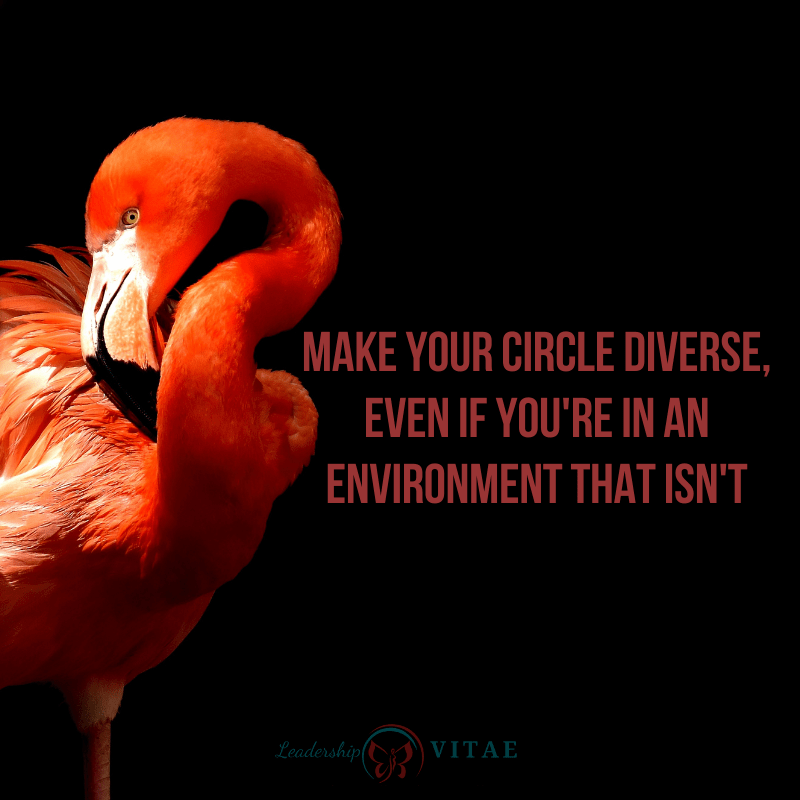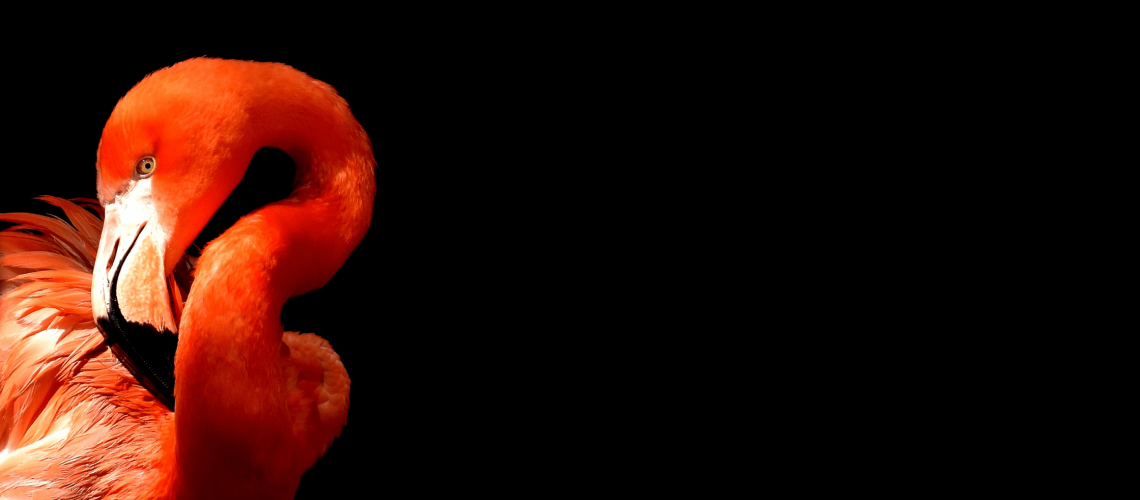
My favorite bird is the flamingo. It is unusual. The flamingo’s color shouldn’t exist in nature and it has knobby knees. Yet it is proud and majestic. To me, the flamingo is fascinating.
A few roles back, I worked for an amazing manager. I shared with him that he made a strange bird feel at home. He surrounded himself with very different leaders, yet we made an amazing and powerful group.
We were a diverse flock, and all felt at home with one another. The experience stood out, because the rest of the executive team had a common feel to it.
In every room, and every interaction, there was a repetition. A common vibe. It felt like everyone expected one type of bird. We either had to project that persona, or feel like we didn’t fit in.
Imagine you’re a flamingo and everyone in every room you enter is filled with blue jays. It can become very uncomfortable. But what if we’re really just wearing blue colored glasses?
The risk and reward of fitting in
When we start out in a new team or organization, we are immediately looking for patterns. It’s human nature to want to understand our environment. We seek homeostasis…how can we create a comfortable place to work?
As we evaluate and engage with our peers and leaders, we observe what works and doesn’t. We likely start to adjust. Going back to the bird analogy, if we work for a blue jay, and see a lot of blue jay characteristics in those around us, maybe we think we need to be a blue jay.
But what if we are a turkey? Do we spend all of our time trying to be the best blue jay impersonator to fit in? Or do we own being a turkey and standing out?
It’s more likely that there are blue jays, cardinals, crows, hawks, and every other sort of bird. Yet if everyone is trying their best to fit with the blue jay leader(s), they are inadvertently defining a norm for success.
And causing those that are not blue jays to ask themselves “Do I belong here?”
Creating a diverse flock
I’m not a blue jay. Or a cardinal. Or a finch. I don’t do a good job being anything other than a flamingo. I didn’t feel like I fit in when I walked into most rooms, so I created rooms where I did.
For years, I welcomed any bird to my flock. At the start, they may have looked the same. Until they joined my team and revealed they were something else. In our eclectic group, you could be any kind of bird you wanted. And belong.
I created networks and connected those that stood out. If they didn’t fit the “norm,” they were my people.
Because I was unapologetically a flamingo in a sea of blue birds, it provided the freedom and safety for others to do the same.
But what happens when we don’t have that safety?
We can’t be every bird
A prior role had a lot of change and uncertainty. That’s normal for my type of work, so I tried to manage the chaos and create stability for my team. To welcome everyone to the flock, in whatever way they best showed up.
In threat state, we are all looking for what is familiar and known. The reality is that people are not the same, so change and uncertainty create conflict and stress within teams. Makes it more difficult to find connection and commonality instead of difference.
I did my best to show up as my team needed, but those needs were different for everyone. A cardinal was looking for cardinal traits. The finch for finch traits.
I started out as a proud flamingo. Over time, I just felt like a strange bird that didn’t fit in. By adjusting myself to meet the needs of each person, I was creating even more uncertainty.
Eventually, I realized I needed to stop trying to be everything to everyone. While it might not feel safe to be different than the group, contorting to fit in can take a physical, mental, and emotional toll.
We cannot be every bird. What we can be is the best and most welcoming version of ourselves. Or find a new environment where that is possible.
Build your flock
Looking back on my career, and all the teams I’ve led, there was so much diversity in each group. Conflict too, as leading change means stress and strain for those involved. But the collective ability of those groups was unparalleled.
Every time I’d think – this is the best team – there would be another amazing group I’d have the privilege to lead. To learn from.
There were feelers and thinkers. Visionaries and warriors. Those that loved process or technology. Who were inspired by meeting customers or by fixing problems.
There may be a temptation to gravitate towards those we think are like us. To find that homeostasis. So much perceived difference may seem chaotic, but it’s the opposite.
We are all multi-faceted and likely have more in common than we realize. If we forget for a moment that I’m a flamingo and you’re a finch, we’ll remember we’re both birds.
When we build those diverse groups, it allows all of us to answer the question “Do I belong here?” with YES.









2 Responses
What a powerful write up. Loved it. Keep writing and keep inspiring ❤️
Thank you Bonya. Appreciate our connection and the inspiration you bring.